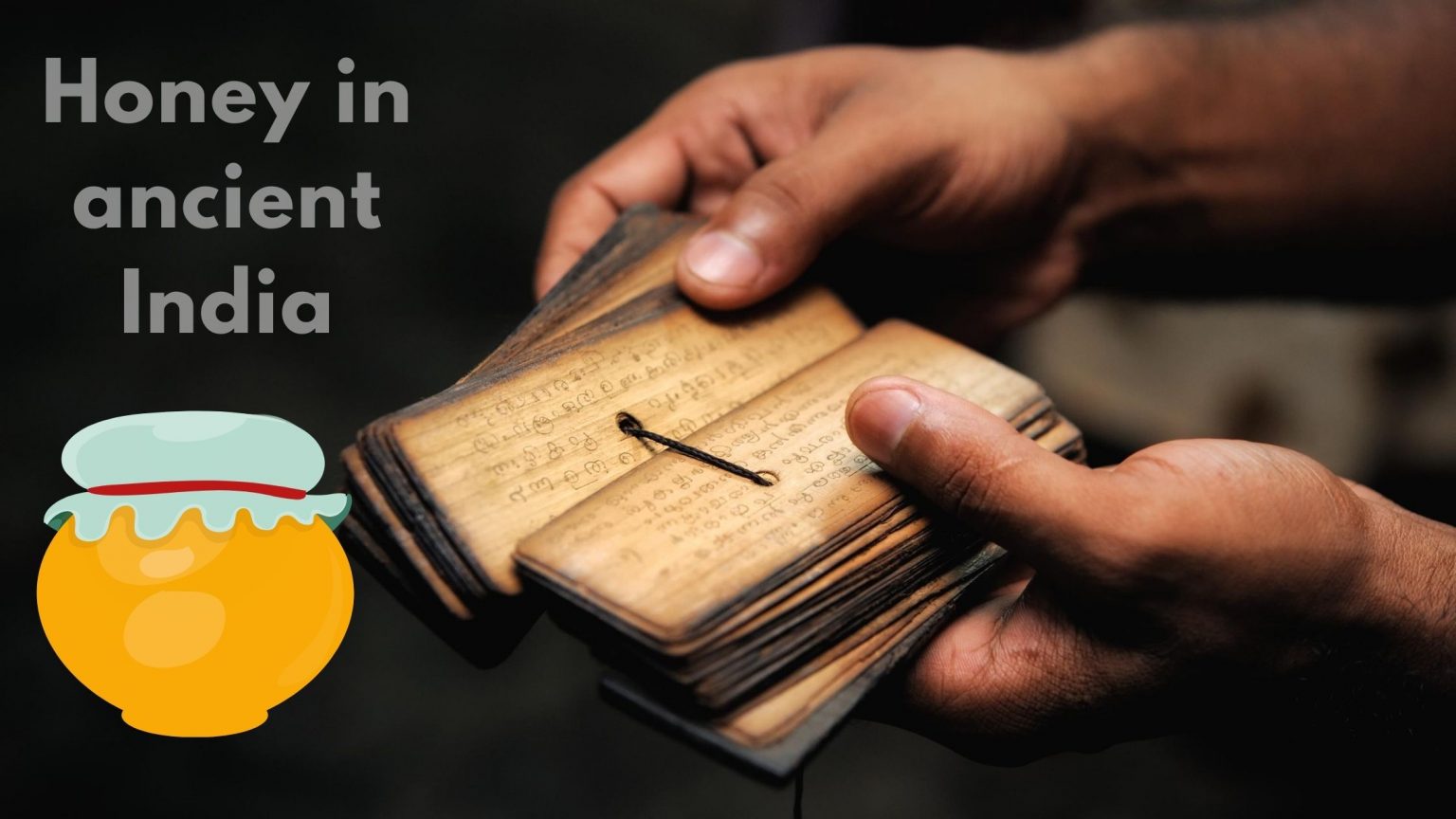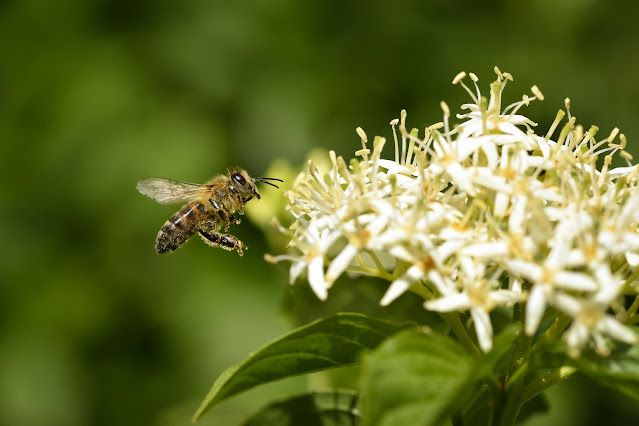Honey in Ancient India

Honey in Ancient India: A Comprehensive Exploration
Honey holds a special place in the history and culture of ancient India. Esteemed not only as a sweetener but also as a potent medicinal and spiritual substance, honey featured prominently in ancient texts, rituals, and traditional knowledge systems. In this article, we delve deeply into the multifaceted role of honey in ancient Indian society, covering its sources, uses, cultural significance, beekeeping practices, and its intricate connections to India's rich biodiversity and philosophical systems.
Topics we Covered:
· Types and sources of honey
· Bee species and biodiversity
· Mythology, rituals, and religious uses
· Medicinal and therapeutic applications
· Trade, economy, and culinary uses
· Beekeeping practices and cultural continuity
· Textual, artistic, and philosophical references
1. Types of Honey
Honey in ancient India was not regarded as a monolithic product. The classification and evaluation of honey were sophisticated, reflecting varied sources, qualities, and uses.
1.1 Based on Source
a) Floral Source
The type of flora from which bees collected nectar profoundly influenced honey's properties:
· Honey from wildflowers, primary forests, and cultivated crops
· Special mentions in texts for honey from Madhuka (Mahua), Shisham, and Neem trees
b) Bee Species
Different bee species produced distinctive honey varieties, a fact well-recognized by ancient Indian apiarists:
· Apis dorsata (Rock bee): Produced in large hives on trees/cliffs
· Apis cerana indica (Indian honeybee): Favored for manageable colonies
· Apis florea, Apis laboriosa, and stingless bees such as Trigona iridipennis were also utilized
1.2 Classification by Properties
Ancient medical treatises such as the Charaka Samhita and Sushruta Samhita document nuanced classifications, including:
· Navat (new honey): Freshly collected, considered laxative
· Purat (old honey): Aged, thought to have drying and anti-obesity properties
1.3 Honey Varieties Recognized
Textual references and folk knowledge identify:
· Pushpa Madhu (flower honey)
· Vanam Madhu (forest honey)
· Makshika Madhu (wild bee honey)
· Dala Madhu (leaf honey)
· Specific regional honeys, prized for their rarity and medicinal virtues
2. Religious and Mythological Significance
Honey's significance extended well beyond a culinary context. It was woven into the religious and mythological fabric of ancient India.
2.1 Vedic References
Honey was among the "Panchamrit"—five sacred substances used in Hindu rituals (Panchamrita). Hymns from the Rigveda and Atharvaveda mention honey as an offering to gods and a component in soma rituals.
2.2 Mythological Significance
· Associated with Madhu, a demon whose defeat symbolizes the triumph of divine order (Vishnu slaying Madhu and Kaitabha)
· Representation in iconography, for instance, the goddess Bhramari (depicted surrounded by bees)
2.3 Rituals and Festivals
· Used in consecration rituals (Abhisheka)
· Offered to deities in numerous festivals
· Incorporated into rites of passage (birth, initiation, marriage)
3. Medicinal and Therapeutic Uses
Perhaps nowhere is honey's ancient utility more evident than in Ayurveda, India's traditional system of medicine.
3.1 Honey in Ayurveda
· Called Madhu, described as "Yogavahi" (enhancer/carrier of medicinal properties)
· Used as an anupana (vehicle) for herbal preparations
· Prescribed for wounds, respiratory issues, digestive ailments, as an energy tonic
3.2 Textual References
· Charaka Samhita: Advocates honey for wound healing, as an antiseptic, and for heart health
· Sushruta Samhita: Describes honey in salve form for burns and sores, cough remedies
· Ashtanga Hridaya: Differentiates between types of honey based on their effects on the three doshas (Vata, Pitta, Kapha)
3.3 Other Healing Systems
Unani and Siddha medical traditions also valued honey for its:
· Antimicrobial, anti-inflammatory, and demulcent properties
· Use in eye treatments, leech therapy, and as a base for syrups
4. Socio-Economic Relevance
4.1 Trade and Economy
· Honey was a valued commodity in ancient Indian markets.
· Traded locally and exported via trade routes extending to Persia, the Middle East, and Southeast Asia.
· Mentioned in accounts of Greek and Roman travelers to India.
4.2 Currency and Taxation
· Honey sometimes served as a form of tribute or tax, particularly in forested kingdoms and tribal regions.
4.3 Edible and Culinary Uses
· Used as a sweetener before the rise of widespread sugarcane cultivation
· Added to food preparations, fermented beverages, and offerings
5. Environmental Aspects and Bee Biodiversity
5.1 Bee Species Diversity
India’s varied ecological zones fostered a range of indigenous bee species, each adapted to ecosystems from humid forests to arid plains.
5.2 Ancient Documentation
Writings such as the Arthashastra by Kautilya document knowledge about bee colonies, swarming, and honey production.
5.3 Ecological Role
· Recognized (even if not formally articulated) the vital role of bees in pollination
· Connection to forest health, agricultural productivity, and sustainable gathering
6. Bee Cultivation Practices
6.1 Traditional Tools and Methods
· Use of clay, wood, and bamboo hives
· Harvesting from wild hives using smoke, specialized knives, and baskets
· Ancient illustrations and sculpture (Ajanta, Ellora) depict honey gathering scenes
6.2 Seasonal Harvesting
· Honey collection was a seasonal endeavor, often celebrated with festivals (such as in tribal communities of the Western Ghats and Central Indian forests)
· Ritual taboos against over-harvesting; honey and combs were sometimes left to ensure bee survival
6.3 Bee Culture and Management
· Early practices of bee domestication, particularly with Apis cerana indica
· Knowledge-sharing and hereditary expertise among forest-dwelling and pastoralist tribes
7. Textual and Cultural References
7.1 Literature and Poetry
Honey is metaphorically rich in Sanskrit poetry, symbolizing:
· The sweetness of love, divine blessings, and poetic inspiration
· Heaven, fertility, and the rewards of virtue
7.2 Folklore and Proverbs
· Numerous folk tales extol the wisdom and diligence of bees
· Proverbs use honey as a metaphor for wisdom, effort, and prosperity
7.3 Art and Iconography
· Depictions of honey collection in cave paintings and temple reliefs
· Bees symbolized industriousness (Shrama), spirituality, and the interconnectedness of life
8. Philosophical and Metaphysical Symbolism
· The honeycomb as a symbol of abundance and unity in the Upanishads
· In Buddhist thought, honey represents the distilled essence of Dharma
9. Preservation and Legacy
9.1 Continuing Traditions
· Many tribal and forest communities maintain heritage honey gathering practices
· Recognition by the Indian government and NGOs of the importance of indigenous honey
9.2 Scientific Rediscovery
Modern research corroborates ancient claims: honey's antimicrobial, antioxidant, and wound-healing properties are validated by contemporary science, underscoring the sophisticated empirical knowledge of ancient Indian apiarists and physicians.
Conclusion
Honey in ancient India was more than a sweetener—it was a vital link between economy, ecology, healing, ritual, and symbolism. Rooted in empirical observation and philosophical reflection, honey's story in India reflects the civilization's unique relationship with nature, health, and divinity. The legacy of honey in Indian tradition stands testament to a time when ecological intelligence and cultural meaning were deeply entwined.



